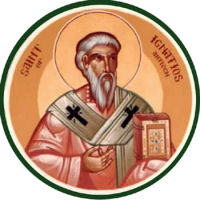Schiavo continues the process of dying by starvation and dehydration, a method of capital punishment most would consider criminal if done to a pet.
This was the method used at Auschwitz to murder Father Maximilian Kolbe, the priest who volunteered to take the place of a Polish father of a large family, who was one of 10 the camp commandant had selected for execution in reprisal for the escape of a prisoner.
After being starved and dehydrated for days, Kolbe was injected by his Nazi captors with carbolic acid. He died a martyr's death, said the church that canonized him. That is what would have happened to Terri. Only she would have been denied the lethal injection by those watching her die.
That there arose a national outcry at the execution of Schiavo – so loud Congress and President Bush heard it and came to the rescue – is a sign America is not morally dead ... yet. But a culture of death has taken deep root in America's soul.
One wonders if our young, so many of them cheated of a knowledge of history in schools they are forced to attend, are aware of how closely our elites approximate, in belief and argument, the elites of Weimar and Nazi Germany in the 1920s and 1930s.
In 1920, Dr. Alfred Hoche, professor of psychiatry at the University of Freiburg, and Karl Binding, a law professor at Leipzig, authored "The Permission to Destroy Life Unworthy of Life." They urged a national policy of assisted suicide for those "empty shells of human beings" – the terminally ill and mentally retarded, and those with brain damage and psychiatric conditions.
In October 1933, The New York Times quoted the Nazi minister of justice as saying that ridding Germany of such poor creatures would make it "possible for physicians to end the tortures of incurable patients, upon requests, in the interests of true humanity." "If we desire a certain type of civilization," said George Bernard Shaw, "we must exterminate the sort of people who do not fit in."
In researching "The Death of the West," I discovered that the first episode of publicized "legal" killing of an innocent was the case of "Baby Knauer." The father of the little boy, who was blind, retarded and missing an arm and a leg, appealed to the Fuhrer for permission to have his son put to death. Hitler referred the matter to his physician, Karl Brandt. In 1938, permission was granted.
When war came in 1939, a program code-named "Aktion 4" went about systematically eliminating all "life unworthy of life" in the Reich. By 1940, scores of thousands had been put to death. Then, Bishop Clemens von Galen took to the pulpit of Munster Cathedral to damn Hitler's regime for "plain murder" and direct German Catholics to "withdraw ourselves and our faithful from their (Nazi) influence so that we may not be contaminated by their thinking and their ungodly behavior."
"Aktion 4" went underground. One of its graduates, Franz Stangl, would turn up two years later as commandant of Treblinka.
After the war, the German doctors who had carried out Hitler's orders in violation of the Hippocratic Oath were judged guilty of "crimes against humanity." The Dutch doctors who refused to cooperate in the Nazi program of eliminating "life unworthy of life" during the occupation of Holland were placed among the moral heroes of an immoral era.
Ironically, as the protest to save Schiavo built up steam over the weekend, The New York Times in its "Saturday Profile" warmly featured another Dutch doctor. Dr. Eduard Verhagen has, said the Times, become famous in Europe for having "presided over the medically induced deaths of four extraordinarily ill newborns."
"For his efforts to end what he calls unbearable and incurable suffering," wrote reporter Gregory Crouch, "Dr. Verhagen has been called Dr. Death, a second Hitler and worse – mostly by American opponents of euthanasia."
Verhagen describes himself as a bearer of peace and happiness to children. When these suffering little ones die, he says, "the child goes to sleep. ... It's beautiful in a way. ... They're children who are severely ill and in great pain. It is after they die that you see them relaxed for the first time. You see their faces in a way they should be for the first time."
Franz Stangl could not have put it better. Hitler's doctors may prove to have been the medical pioneers of 21st century.

































No comments:
Post a Comment